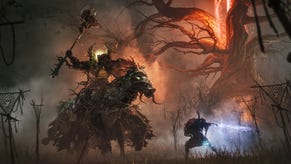BBFC hits back at ratings claims
The BBFC has hit back at suggestions that it doesn't provide a more effective ratings system than the PEGI version, as suggested by Microsoft's UK head of corporate affairs Matt Lambert, at a CMS Select Committee hearing yesterday.
The British Board of Film Classification has hit back at suggestions that it doesn't provide a more effective ratings system than the Pan European Game Information version, as suggested by Microsoft's UK head of corporate affairs Matt Lambert, at a CMS Select Committee hearing yesterday.
Lambert had said that the "BBFC is set up to rate films, and it takes that approach for games when a different approach is required," and that the PEGI system was "a different depth, it's more sensible, and it also has a European aspect to it."
But speaking to GamesIndustry.biz the BBFC has rejected those claims, and stated that while the body uses the same symbols as for films in order to enable a greater understand of the level of content to be expected in games, it doesn't "classify games in the same way that we classify films, because we physically play the game."
"We know for a fact that the public is confused by [the PEGI] symbols, they don't understand them," said a spokesperson. "They do understand consumer advice which says 'Contains strong language' or 'Contains strong violence'.
"The fact is, we provide consumer advice about the content - and extended information - on our Parents website about exactly the sort of things you can expect to encounter in the game, in all of the games we classify - and we do it in words, which people understand, they don't understand the pictograms.
"We know this - in January we did research and the public really couldn't get their heads around what a spider meant. That is not sufficient information for them to make a decision."
In addition, while the BBFC admits that there is confusion over game ratings, it's not helped by the PEGI system.
"What people think about the PEGI system is that it's a difficulty rating," said the spokesperson. "One of the parents in our research groups was complaining that she had bought a game with a 3+ on thinking it was suitable for her child, and it turned out to be a complicated sports game - whereas if they see a PG12, they know it's going to have the sort of content (and here you can argue that the system is similar) as they would expect from a 12-rated film.
"Just like when they get a film that's an 18, and says 'Strong bloody violence' they have an idea of what that is, because they've seen it in 18-rated filmsâ¦The fact is, sticking a spider on the back of a box is not going to help a person make the kind of decision that they ought to be making about games."
The BBFC also underlined that during its review process it employs people that actually plays through the games, and noted the contrast with the PEGI methodology.
"Unlike the PEGI system, which is purely a tick-box system filled in by the distributor themselves, the BBFC has very well-qualified games examiners - who are games fans themselves - to play the games right through all the levels, with the cheat codes, and spend a lot of time playing them so that they know what the content is.
"Yes, we're using the same symbols that we use for films, but that's because parents understand what those symbols mean."
The CMS Select Committee is investigating the effect of violence in videogames and on the Internet, alongside the Byron Report, with the latter publication expected to recommend improvements to the age rating system in the UK.








